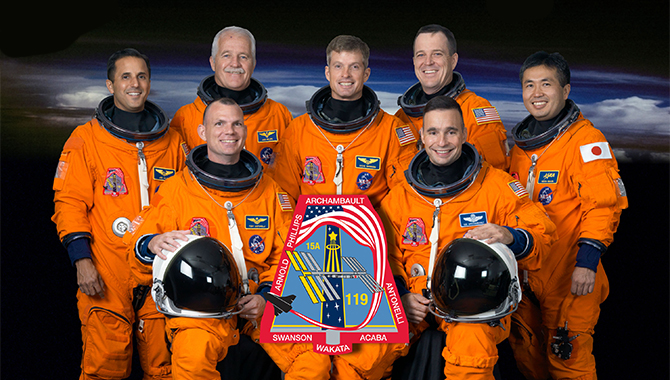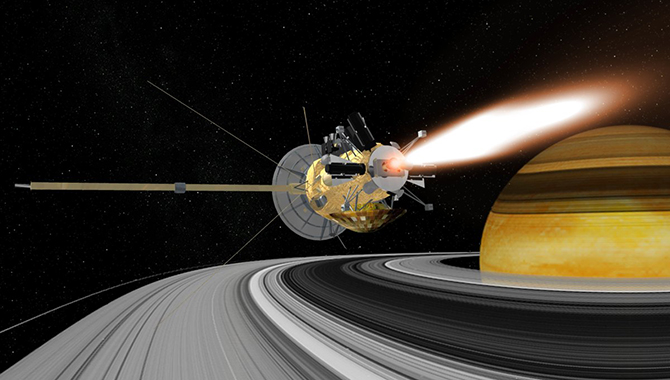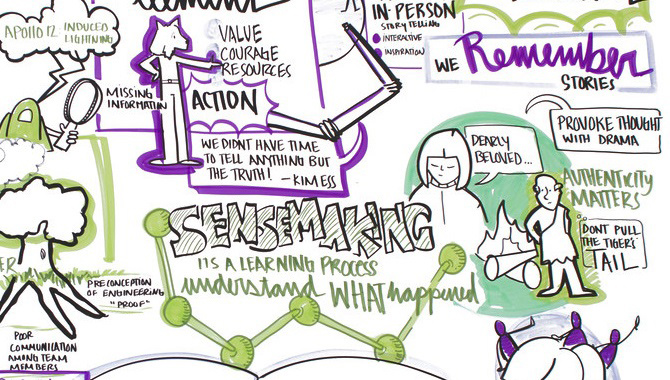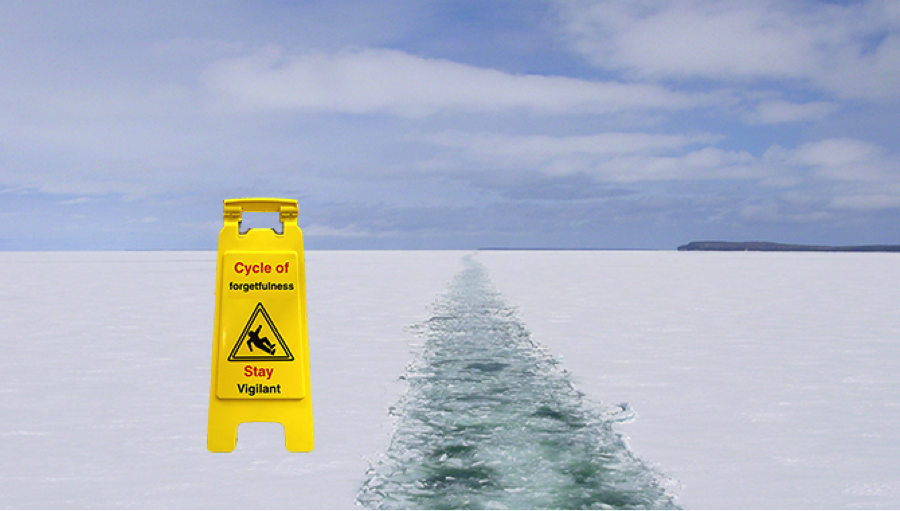
Attired in training versions of their shuttle launch and entry suits, these seven astronauts take a break from training to pose for the STS-119 crew portrait. From the right (front row) are NASA astronauts Lee Archambault, commander, and Tony Antonelli, pilot. From the left (back row) are NASA astronauts Joseph Acaba, John Phillips, Steve Swanson, Richard Arnold and Japan Aerospace Exploration Agency astronaut Koichi Wakata, all mission specialists. Wakata is scheduled to join Expedition 18 as flight engineer after launching to the International Space Station on STS-119.
Photo Credit: NASA
Five years ago, NASA launched the space shuttle Discovery on STS-119 on March 15, 2009. The process of getting to “yes” for launch on this mission was a challenging one, and the communication and collaboration that took place revealed an organization that had come a long way since the Columbia accident in 2003.
The story of the launch of STS-119 began four months earlier with the launch of space shuttle Endeavor on November 14, 2008 on STS-126. Flight controllers monitoring data during the ascent identified that gaseous hydrogen (GH2) was flowing from one of the shuttle’s engines to the external fuel tank at a higher than normal rate. They determined that the likely causes of the malfunction were either an electrical failure or a mechanical failure, which might have resulted from a broken valve. This would require immediate attention as soon as STS-126 landed safely.
After landing, engineers inspected the main propulsion system and discovered that a GH2 flow control valve poppet was cracked and a small piece was missing. In order to develop an understanding of the problem, teams of engineers assembled across the agency to conduct analysis, modeling, and testing.
As the shuttle program prepared for the launch of STS-119, originally scheduled for mid-February 2009, leaders from the program, engineering, and safety organizations evaluated the flow control valve issue at three Flight Readiness Reviews before reaching a consensus. The degree of collaboration it took to understand and solve this problem was extraordinary. At the peak of activity, roughly one thousand people were working at multiple NASA centers and contractor facilities across the country.
In short, the launch of STS-119 illustrated the transformation that had taken place at NASA over the previous six years. In 2003, the Columbia Accident Investigation Board concluded that, “NASA’s current organization…has not demonstrated the characteristics of a learning organization.” The investigation of the flow control valve anomaly was something different. It was the work of a learning organization that was willing to ask hard questions and dig deep for answers. It was an organization that shared knowledge across boundaries and didn’t stop searching for answers until it had the data it needed to characterize a difficult problem and understand its implications. And it was an organization that exemplified NASA’s values of safety, teamwork, excellence, and integrity.









